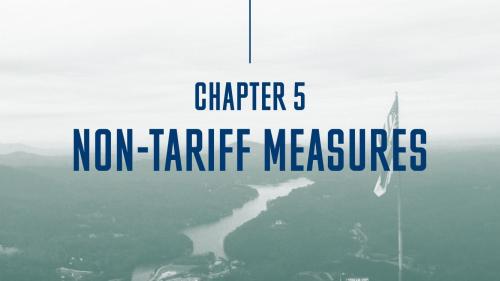This report is part of the Series on Financial Markets and Regulation and was produced by the Brookings Center on Regulation and Markets.
The post-Crisis era has witnessed a multitude of financial reforms. Many of these reforms were deeply needed after the fragility of the prior system was exposed in 2008. Much stronger foundations are now in place to buttress bank solvency, end too-big-to-fail, and address ‘shadow banking’ concerns.1 But, alongside these broadly-agreed reforms lurk other ideas that may sound attractive, but could eat away at some of the progress we’ve made. One of those ‘reform termites’ is the emergence of widespread ‘ring-fencing’.
What is ‘ring-fencing’?
Many reform ideas have focused on the structure of big banks, and recommend some form of ‘ring-fencing’ to make banking safer. Some push for product segregation, such as UK ‘ring-fencing’ to protect retail activities or calls to renew Glass-Steagall walls in the U.S. Others advocate splitting banks on a geographic basis. Geographic ‘ring-fencing’ has become popular of late, with initiatives like the Intermediate Holding Company (IHC) rule for foreign banks in the U.S. and a mirror-image rule recently proposed by the EU for foreign banks operating there, among others. These ‘ring-fencing’ proposals all require dedicated capital and liquidity resources that are subject to local control.

In 2008, economic and market pressures pushed major banks like Fortis Bank or Lehman Brothers into an unplanned and uncoordinated failure. These ‘crash-landing’ failures surprised many and imposed losses on entities in both home and host countries. This suggested that the smart strategy for host regulators was to move aggressively to protect local operations and reduce the risk to their national interests. Segregating activities in a subsidiary and then requiring significant local capital and liquidity resources became a common strategy. This conclusion was rational in 2008, when there was no legal regime specifically designed to handle a systemically important bank failure, no pre-planning, and (especially) no pre-placed bail-in capital that can be converted into fresh equity.2 Under such circumstances, banks were said to be “international in life, but national in death.”3
Under such circumstances, banks were said to be “international in life, but national in death.”
Geographic partition and ‘ring-fenced’ local resources can seem smart under those circumstances, and provides for a measure of national control. But does it actually make the banking system safer? In a working paper we published recently, we find that the drawbacks of ‘ring-fencing’ can be significant and can eat away at the progress that’s been made to make banks safer. Our framework starts with a simple model bank with four equally-sized divisions. We apply a standard Monte-Carlo process to generate a broad range of economic conditions, and Merton-style credit framework to estimate the risk of failure under stress. We then test the solvency risk outcome under different ‘ring-fencing’ rules, from an ‘integrated bank’ with fully mobile capital to a fully ‘ring-fenced’ bank. We find that extensive ‘ring-fencing’ can increase the risk of banking, and that the impact can be surprisingly large.4
The Siren Song of ‘Ring-Fencing’
At first, ‘ring-fencing’ seems to work, and improve the safety of the local subsidiary. There is a major advantage for a single ‘ring-fencer’ if other jurisdictions do not match that decision. The first ‘ring-fencer’ benefits from both a) local capital and b) the ability to tap a large central reserve (see case #2a, below). However, trapping capital for one subsidiary cuts down the resources for others – and their risks begin to increase. If other jurisdictions adopt countervailing ‘ring-fencing’ policies to address this issue, then the benefit of a pooled ‘central reserve’ is lost. Eventually, all jurisdictions become worse off (cases 3 & 4).

If ‘ring-fencing’ becomes widespread, the likelihood of failure can increase by 5x or even 15x (see cases 3 and 4 in the chart) compared to an Integrated Bank structure where internal capital is fully mobile.5 This is caused by ‘misallocation risk’ – the risk that a bank has enough capital resources overall, but cannot get those resources to the right subsidiary in time to avoid a local failure. (See Appendix Figure 1)
A Prisoner’s Dilemma?
Our analysis suggests that – if retaliation is pervasive – the outcome for a ‘ring-fencing’ host country will end up worse than when it started. Its local bank entities will become riskier, potentially dramatically so. This is analogous to a ‘prisoner’s dilemma’, an economic paradox where each participant seeks to achieve a local benefit, but ends up worse off when others also pursue their own incentives. If local incentives are sufficiently strong, a negative outcome can seem inevitable.
But the rules of the actual prisoner’s dilemma also stipulate that the participants cannot cooperate to achieve a better outcome. Bank regulators are not held incommunicado – they can cooperate and build mechanisms to share in the global gains from a more enlightened approach. Our paper concludes with a ‘straw man’ proposal that seeks to escape from the prisoner’s dilemma, and reduce risk for both the group and local host jurisdictions.
A ‘straw man’ proposal
In particular, our straw man builds on the new post-crisis bank resolution architecture. In 2008, cross defaults (or structural negligence) pushed bank subsidiaries into a crash-landing failure when the parent failed; there were no TLAC resources or special legal authority to manage bank failure. But today, group failure will look fundamentally different. Under Financial Stability Board (FSB) resolution mechanisms6, failure does not lead inexorably to local entity bankruptcy but instead triggers a recapitalization, funded by bailing-in pre-placed TLAC resources. Bail-in resources have already been scaled in the U.S. to roughly $1 trillion (on top of more equity) – a huge amount of on-call capital, and fully sufficient to address a 2008-scale scenario.
Bail-in resolution creates a pathway for a much better solution to the ‘ring-fencing’ problem. It provides funding to support home-host cooperation and protect local subsidiaries and their critical functions. The straw man in our paper looks to improve group resilience through a transparent, mutual reduction of ‘ring-fencing’ barriers. Hosts are protected by ongoing capital maintenance requirements, together with preplaced ‘gone-concern’ resources to assure compliance (see paper for details). This proposal diverges from the current regulatory approach, which has mostly transposed rules for external capital7 without working through these global effects.
A solution that exploits the new resolution architecture can achieve a far better result, as Mark Carney, Chair of the FSB, suggested last year:
A decade of hard fought financial reform creates enormous opportunities. It’s all too easy to give into protectionism, but the road less taken is often the most rewarding. All the conditions are in place for following the ‘high road’ of mutual recognition and cooperation both with Europe and across the G20.8
Many people have argued that the solution for cross-border banking is improved regulatory ‘trust’. We suggest that a better approach is to build that trust on a firm base of enlightened and well-funded self-interest.
Many people have argued that the solution for cross-border banking is improved regulatory ‘trust’. We suggest that a better approach is to build that trust on a firm base of enlightened and well-funded self-interest. Host regulators can all benefit from the lower global risk of a less ‘ring-fenced’ institution if they can agree to some measure of ‘mutual disarmament’. They can improve local safety and resilience by replacing hard ‘ring-fencing’ with a broader framework, one designed to ensure both host protection and global resilience. The construction of this ‘high road’ will not be easy, but the benefits for financial resilience and economic performance are large and worth the effort.
Appendix Graphs


Wilson Ervin is a vice chairman in the group executive office at Credit Suisse, based in New York. The views expressed here are his own. The author did not receive financial support from any firm or person for this article or from any firm or person with a financial or political interest in this article.
-
Footnotes
- See, for example, the letter from the Chairman of the Financial Stability Board (FSB), Mark Carney, to G20 leaders, dated July 3, 2017. Available at: http://www.fsb.org/wp-content/uploads/P030717-1.pdf
- ‘Bail-in capital’ is the ‘gone concern’ part of ‘Total Loss Absorbing Capacity’ (TLAC). TLAC consists of both going-concern equity and gone concern bail-in funding (e.g. long-term debt) that can be converted to fresh equity in the event of resolution to protect critical functions and protect operating subsidiaries.
- Quote is variously attributed to Mervyn King, Charles Goodhart and Thomas Huertas.
- The model bank consists of 4 equally-sized divisions. These could be owned in a mobile (branch) or ‘ring-fenced’ (subsidiary) form. It estimates the likelihood of failure under different rules for capital reallocation in the face of stress. Failure is triggered if net assets (capital) drop below a minimum threshold. Asset values are varied by a Monte Carlo process, and parameters are calibrated to approximate current market levels. For details, see: https://papers.ssrn.com/sol3/papers.cfm?abstract_id=3085649. Intuition: These results can be analogized to the risk of exercise of put option on bank assets, struck at a solvency threshold (out-of-the-money). An integrated bank (case 1) has a lower risk of failure than a standalone subsidiary (case 3) because the consolidated bank assets are inherently more diversified (less volatile). See Appendix Figure 2. Case 4 shows an even larger impact, because solo failure is not only more likely, but can also result from the collapse of any sister subsidiary, meaning that there are 4 potential triggers rather than 1.
- Our paper is a first attempt to quantify the solvency implications of ‘ring-fencing’, and to propose a policy response; we would welcome refinements to either element. The policy motivation does not depend on the exact severity of the risk increase, however. If refined models reduced the impact by half (e.g. from 5x to 2.5x), the outcome would still justify a policy initiative.
- See FSB “Key Attributes of Effective Resolution Regimes for Financial Institutions,” 15 October, 2014
- For example, see the U.S. IHC rules which impose a capital framework with tests that are broadly similar to US Bank Holding Company requirements, such as risk-weighted ratios, leverage ratios, TLAC ratios and CCAR stress tests; net IHC constraints typically lie in a range that is similar to BHC requirements.
- Mark Carney, Governor, Bank of England: ”The high road to a responsible, open financial system”, 7 April, 2017






